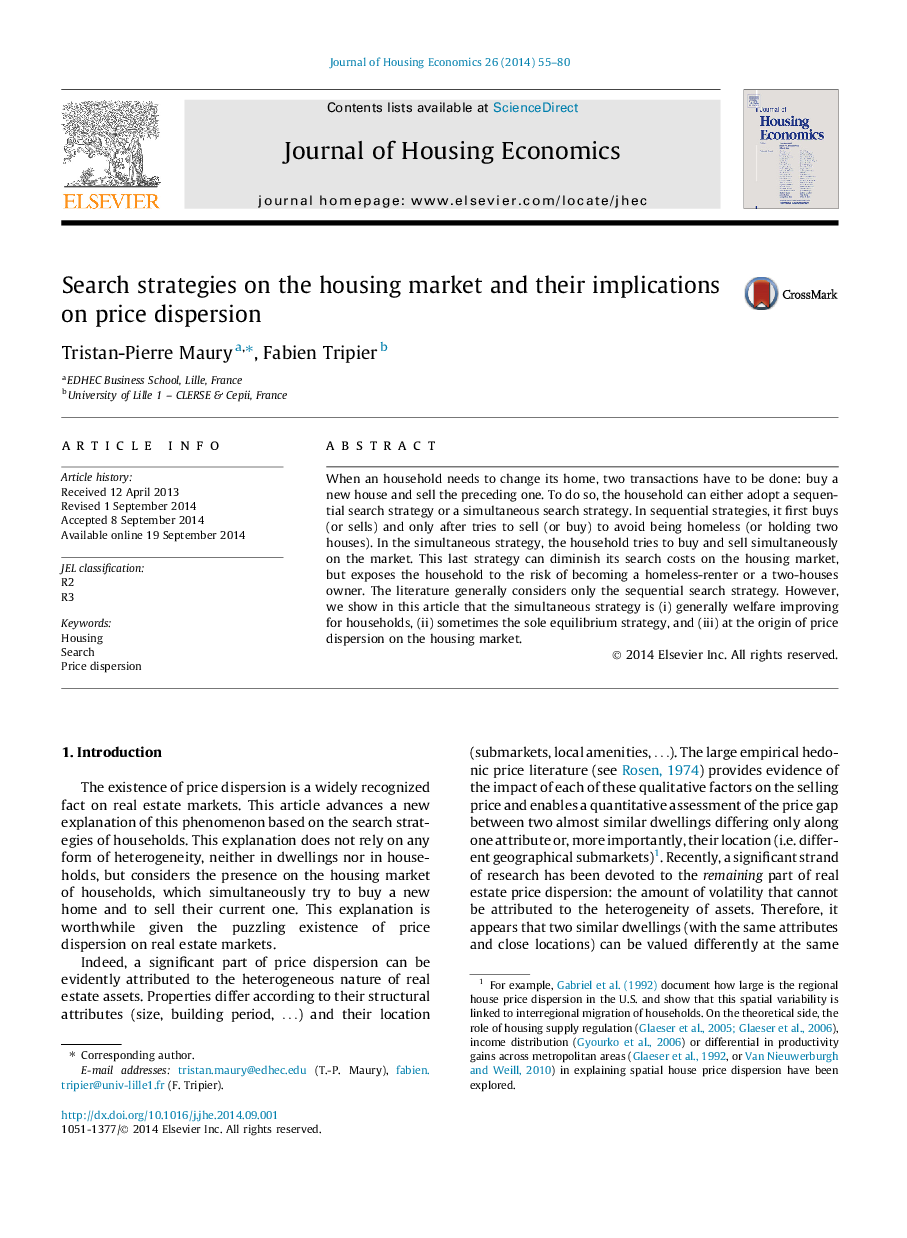| Article ID | Journal | Published Year | Pages | File Type |
|---|---|---|---|---|
| 962593 | Journal of Housing Economics | 2014 | 26 Pages |
Abstract
When an household needs to change its home, two transactions have to be done: buy a new house and sell the preceding one. To do so, the household can either adopt a sequential search strategy or a simultaneous search strategy. In sequential strategies, it first buys (or sells) and only after tries to sell (or buy) to avoid being homeless (or holding two houses). In the simultaneous strategy, the household tries to buy and sell simultaneously on the market. This last strategy can diminish its search costs on the housing market, but exposes the household to the risk of becoming a homeless-renter or a two-houses owner. The literature generally considers only the sequential search strategy. However, we show in this article that the simultaneous strategy is (i) generally welfare improving for households, (ii) sometimes the sole equilibrium strategy, and (iii) at the origin of price dispersion on the housing market.
Keywords
Related Topics
Social Sciences and Humanities
Economics, Econometrics and Finance
Economics and Econometrics
Authors
Tristan-Pierre Maury, Fabien Tripier,
